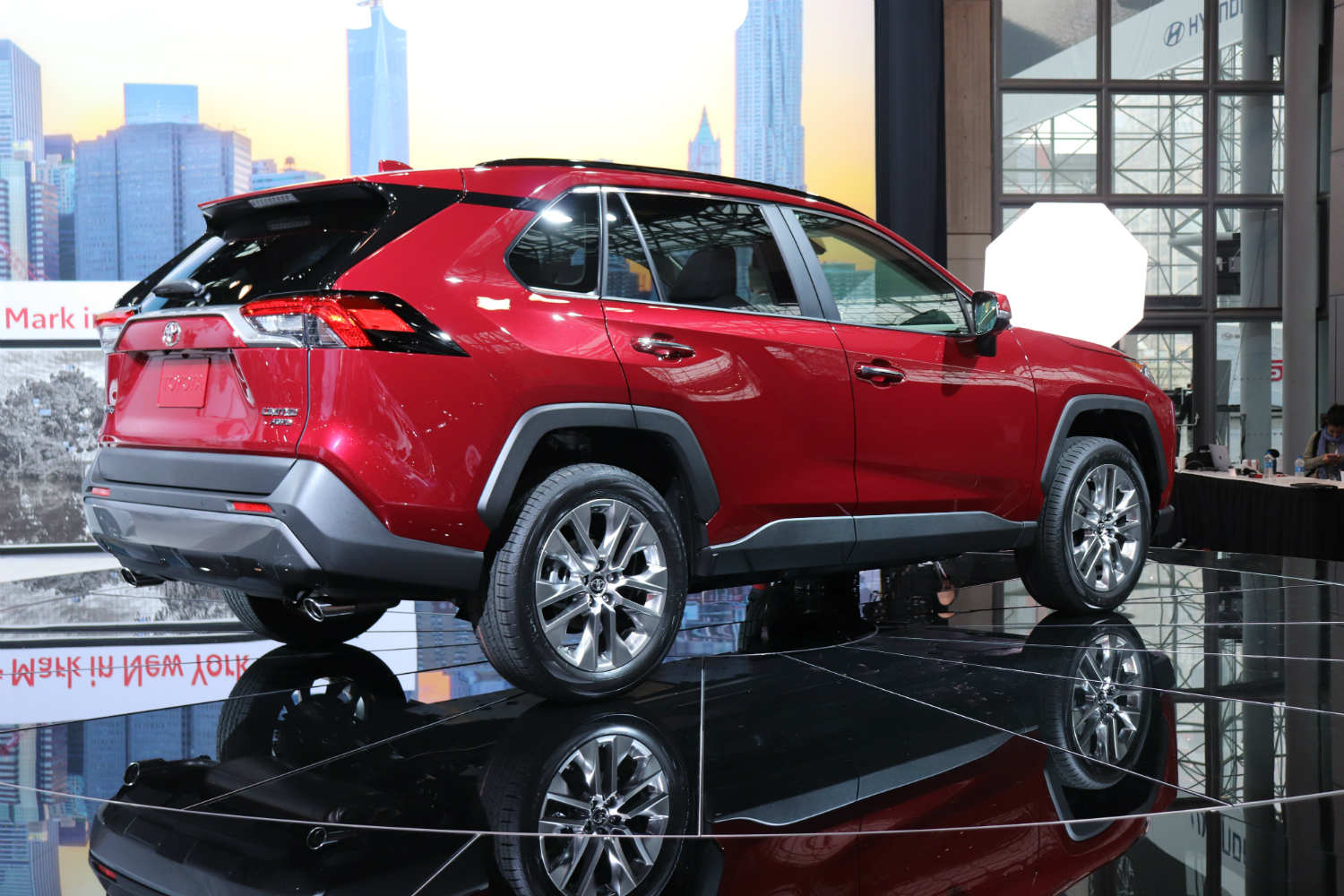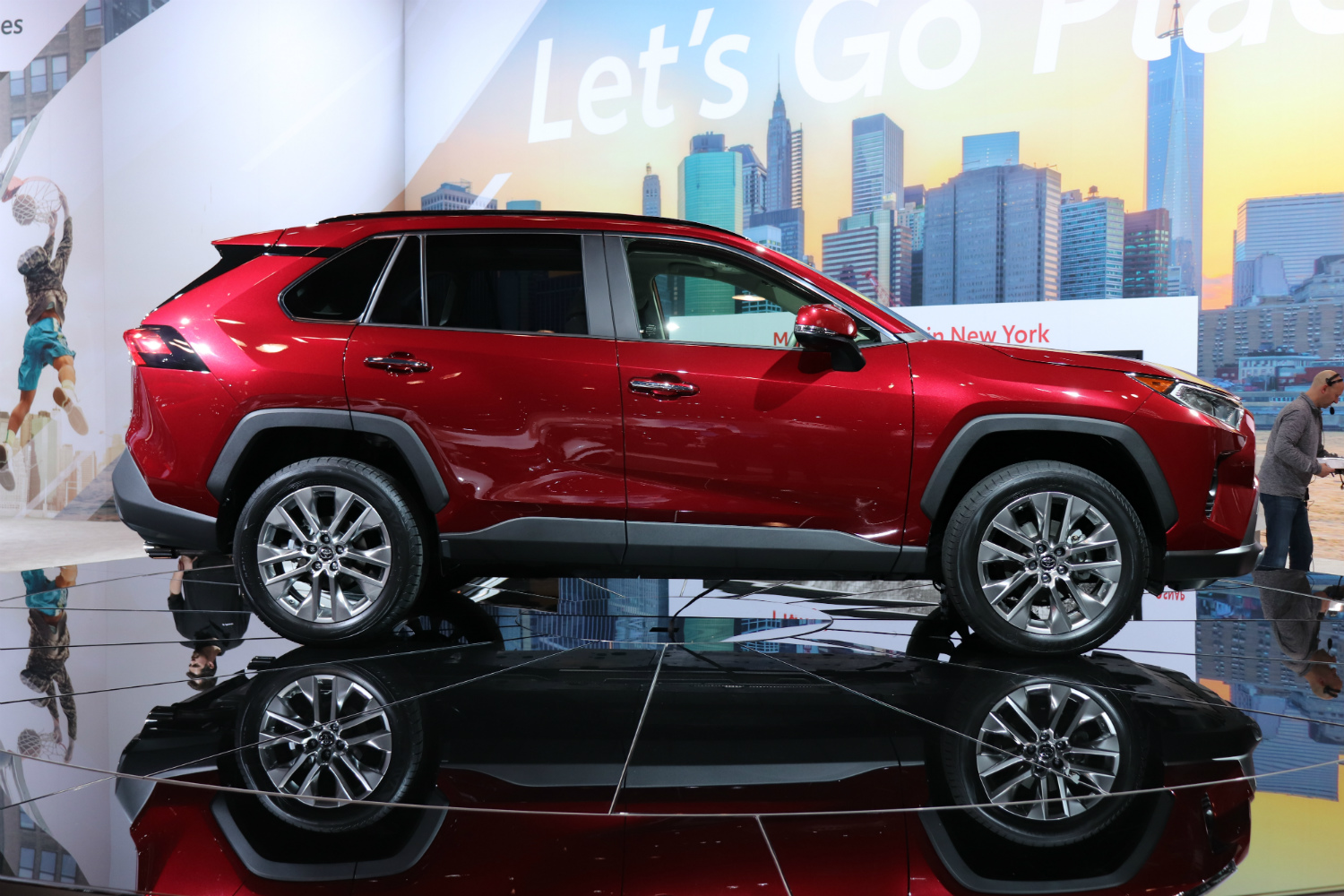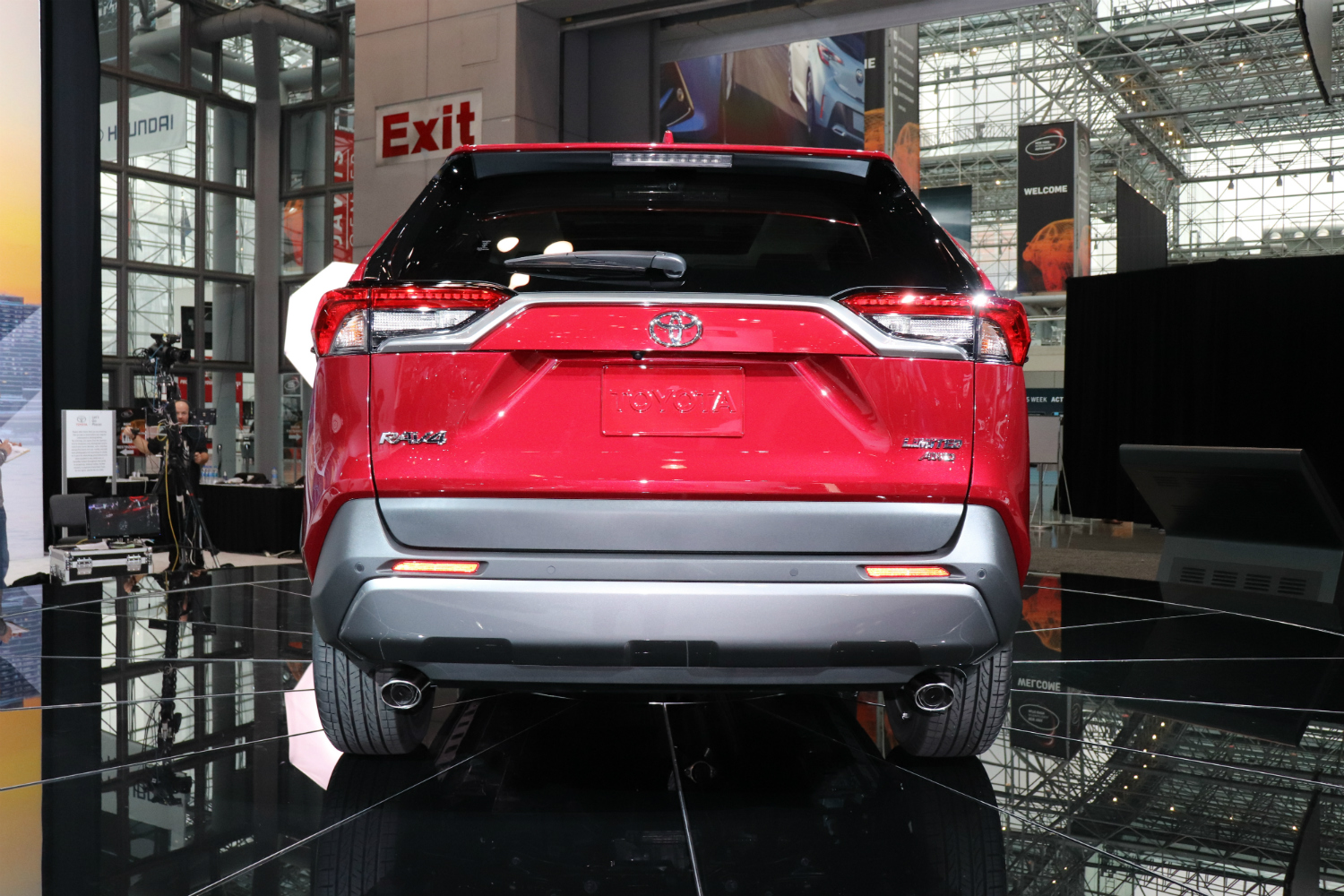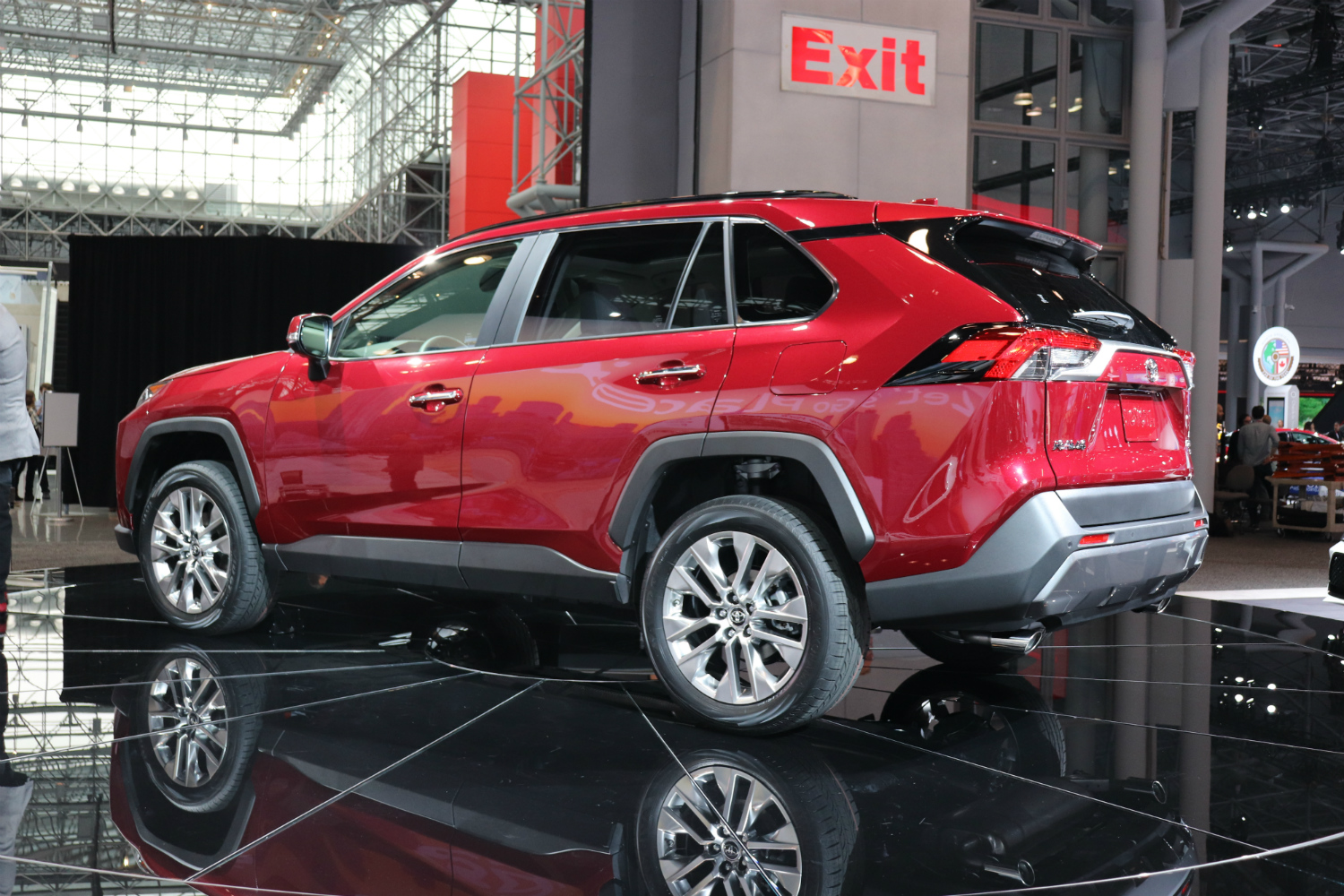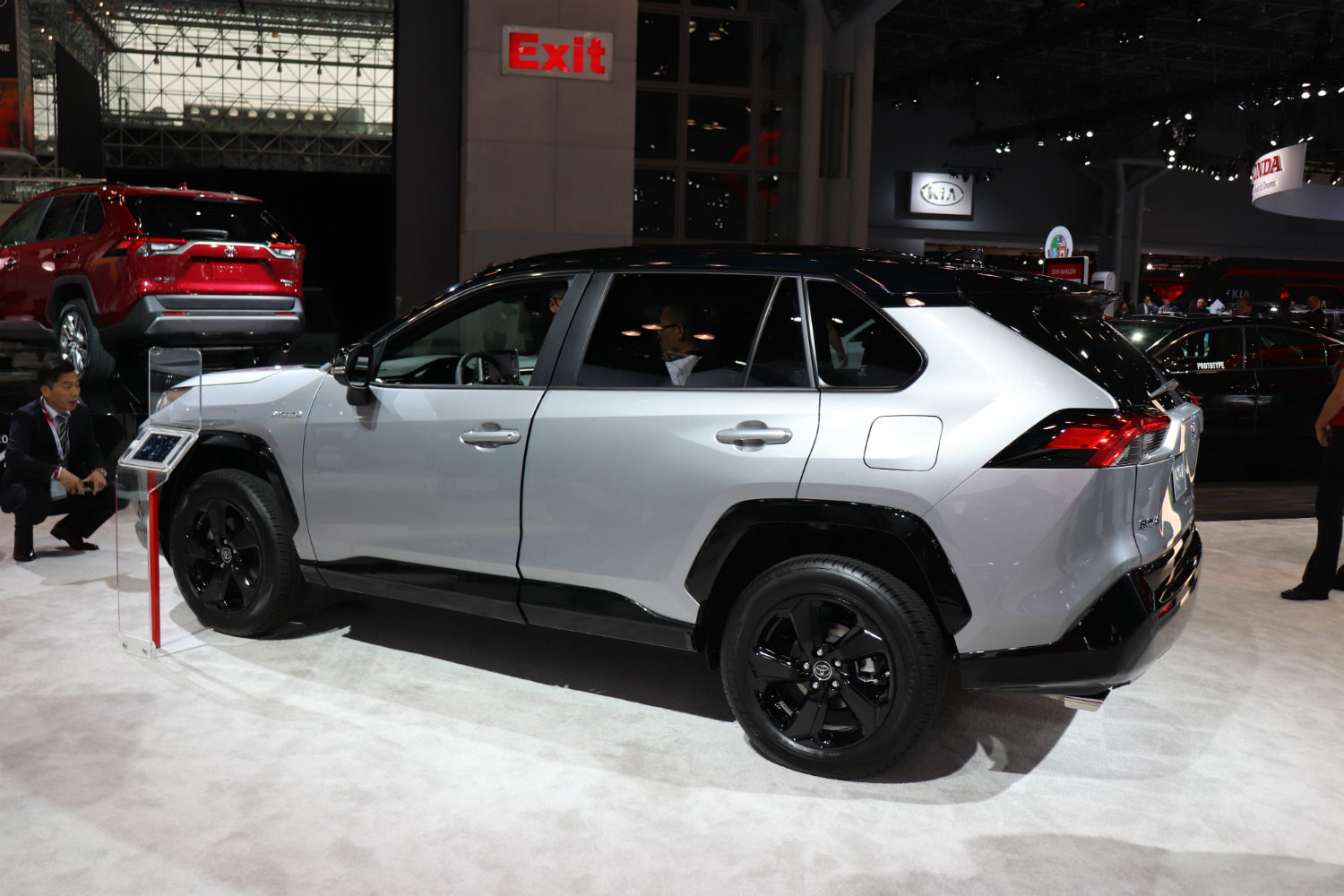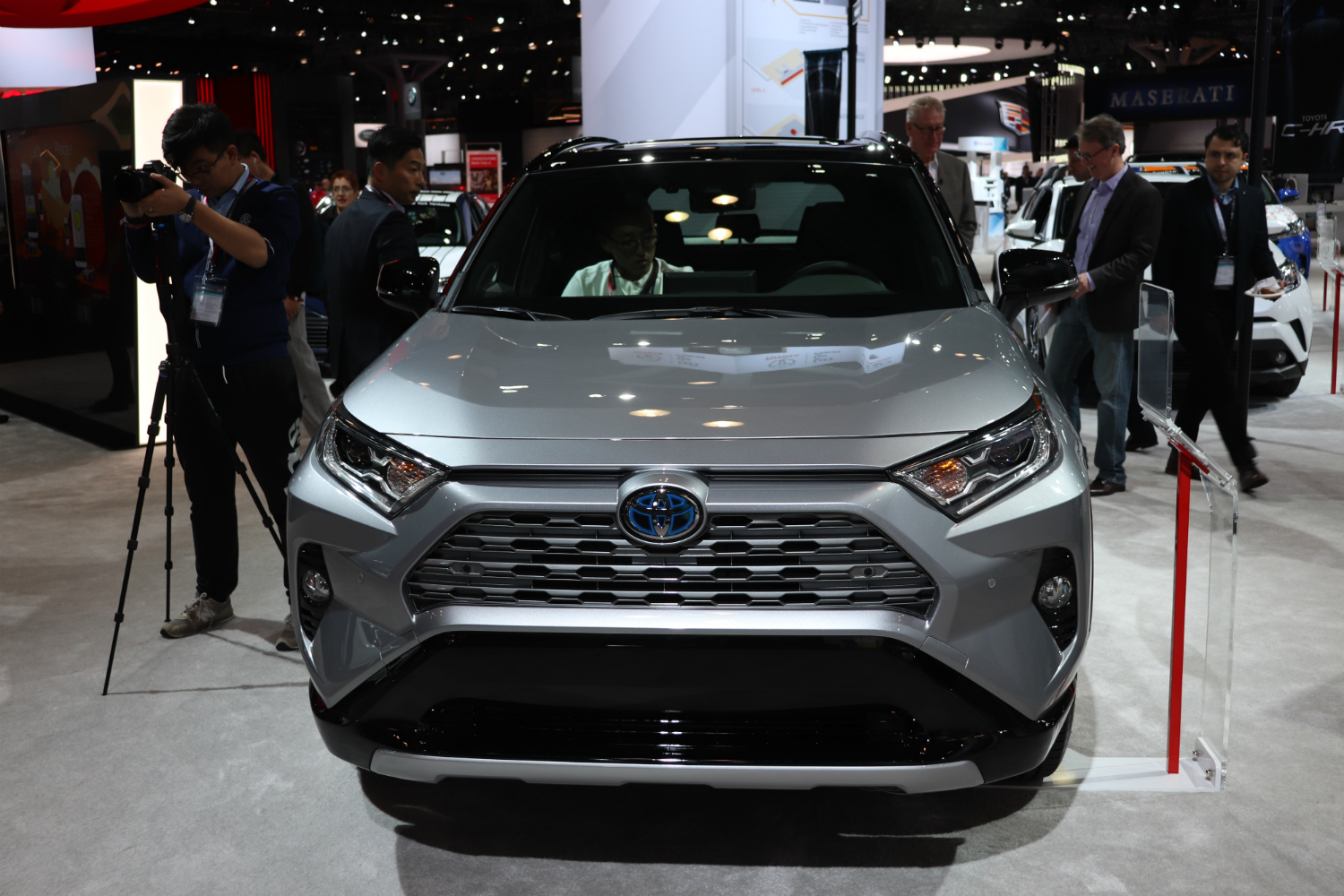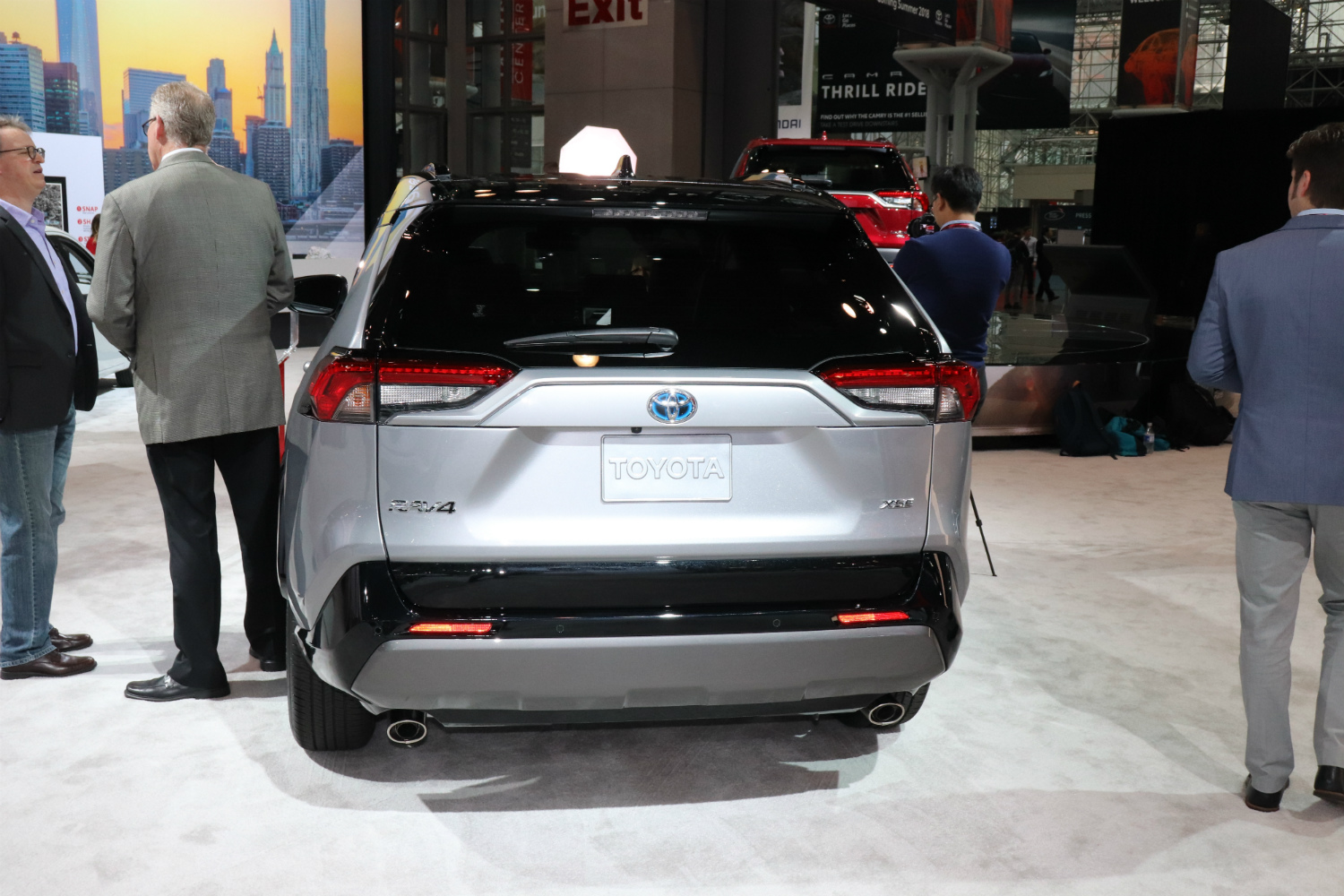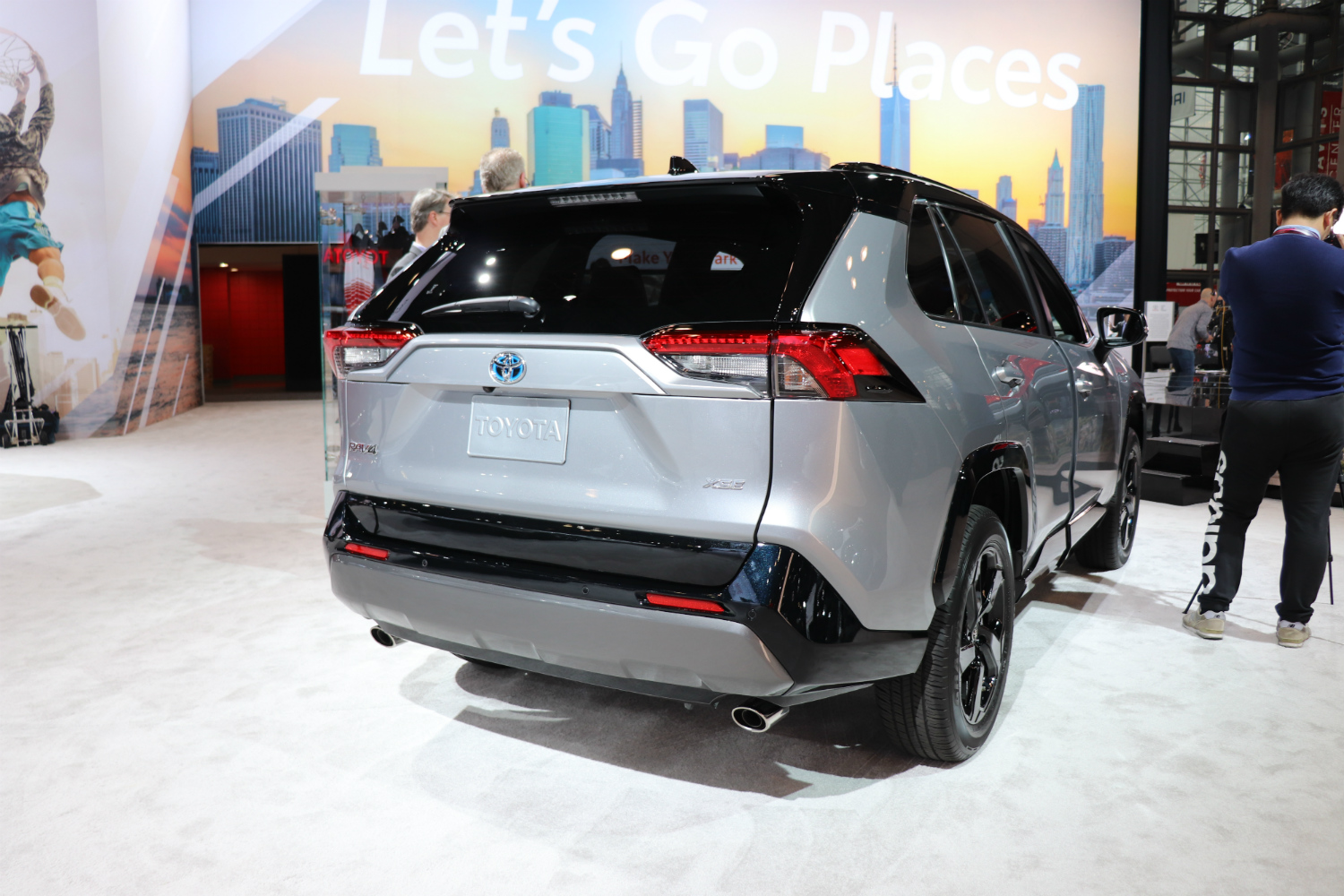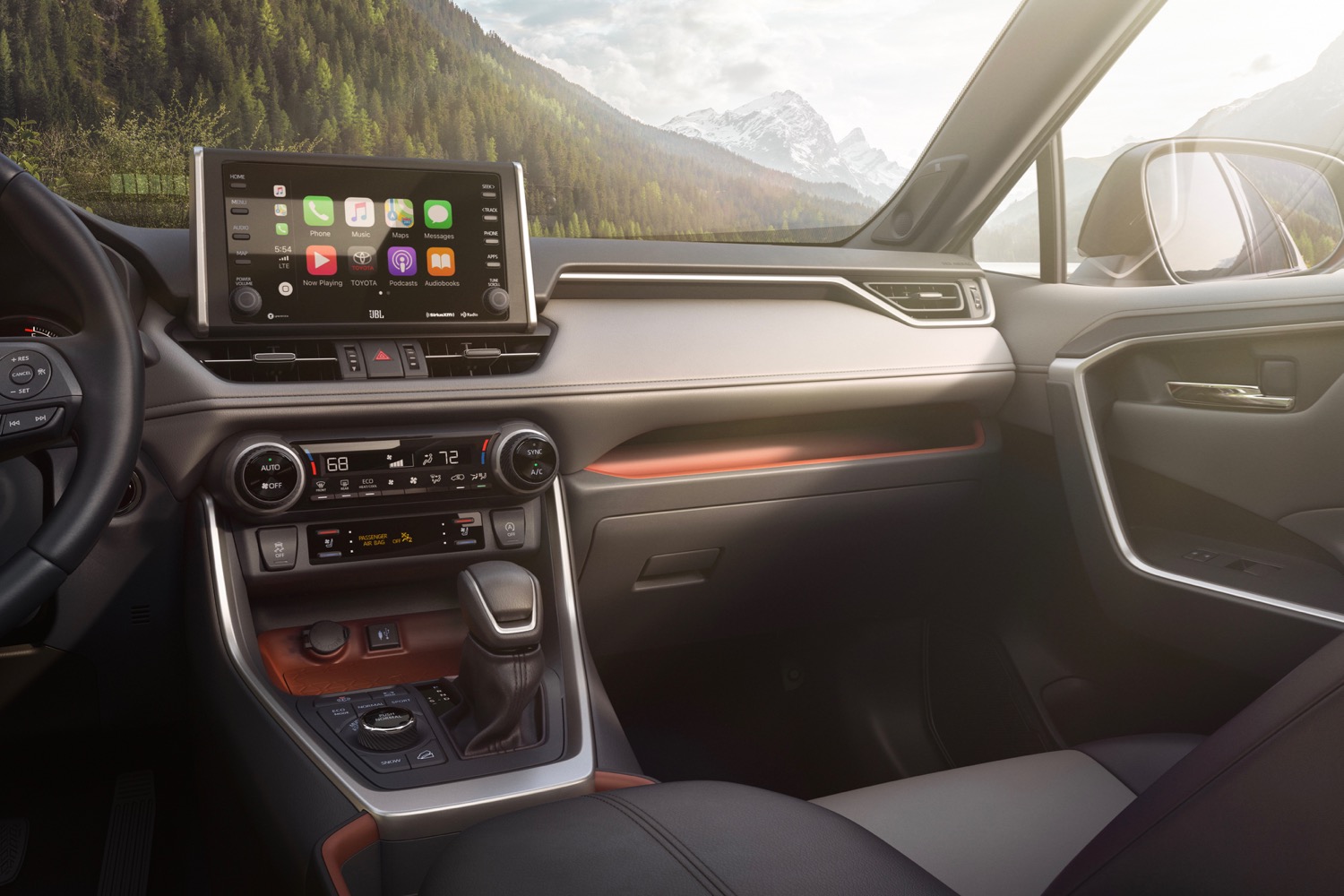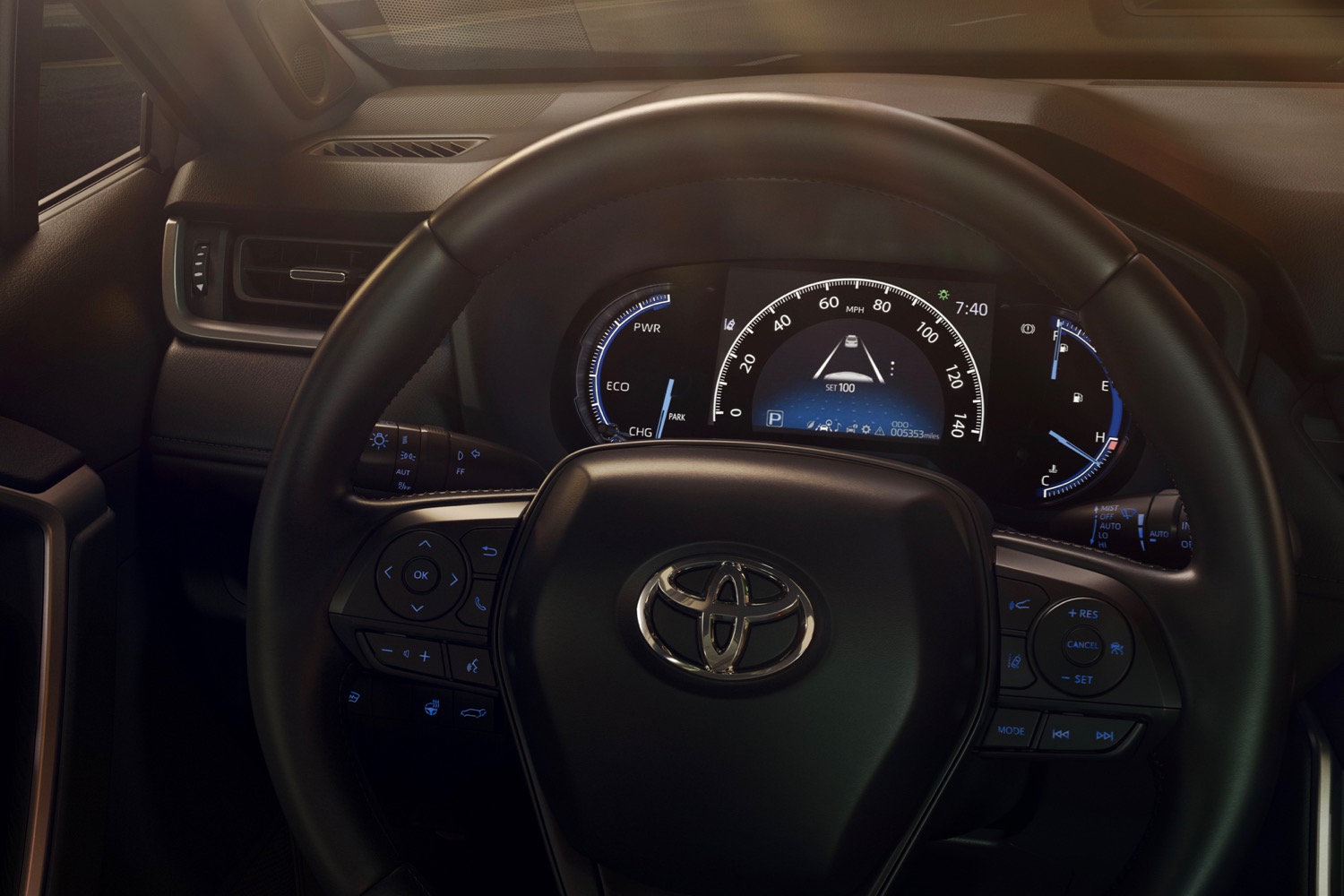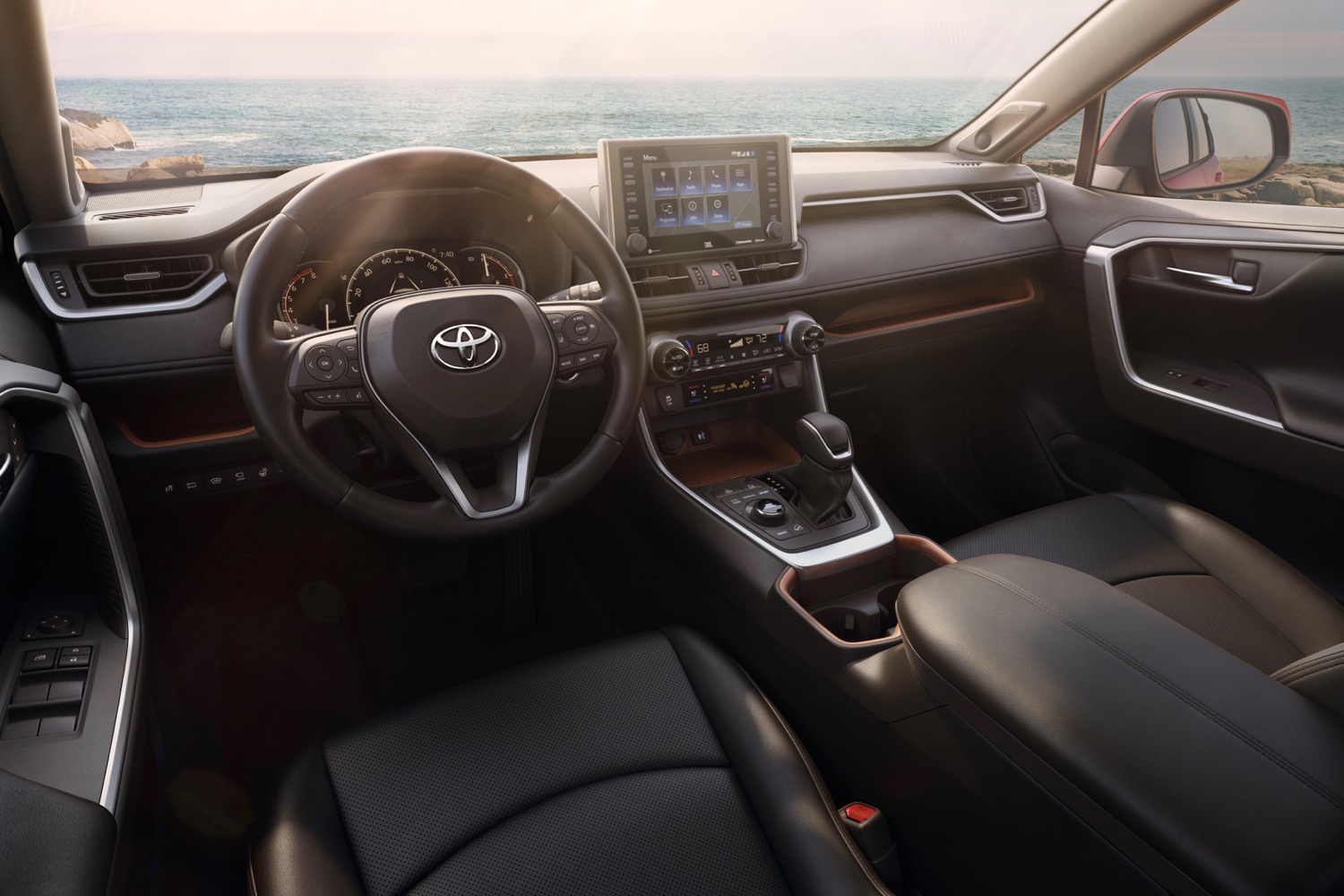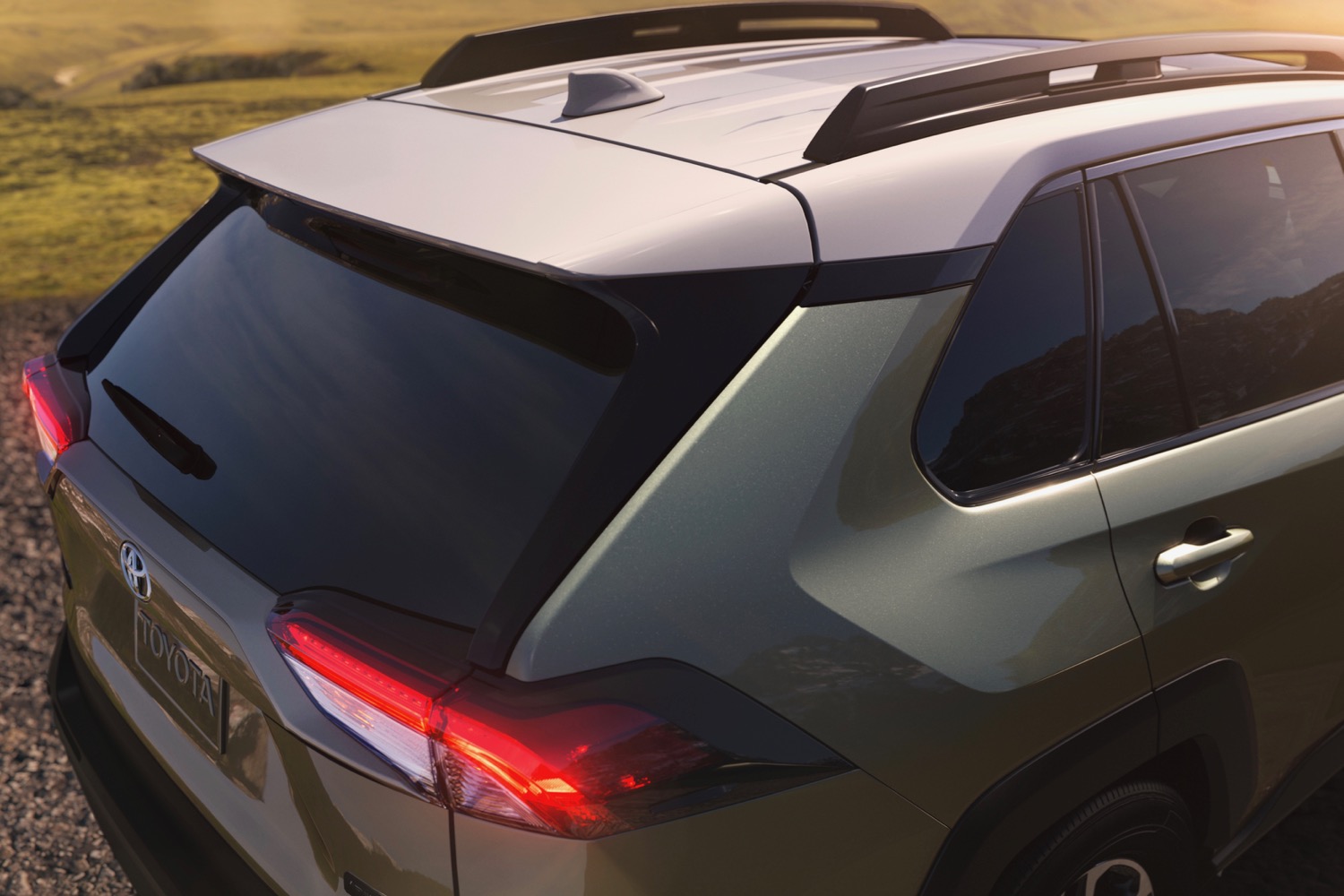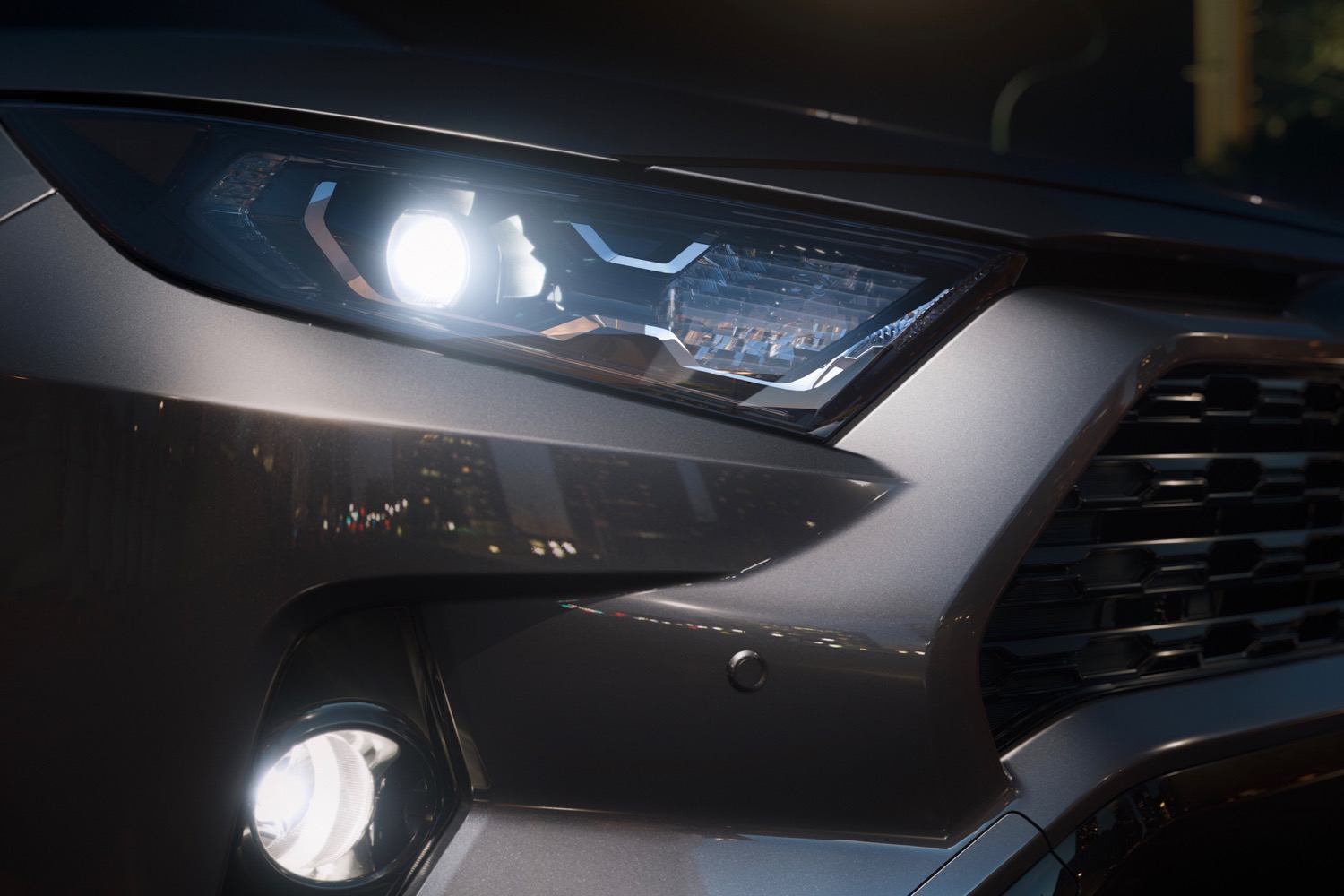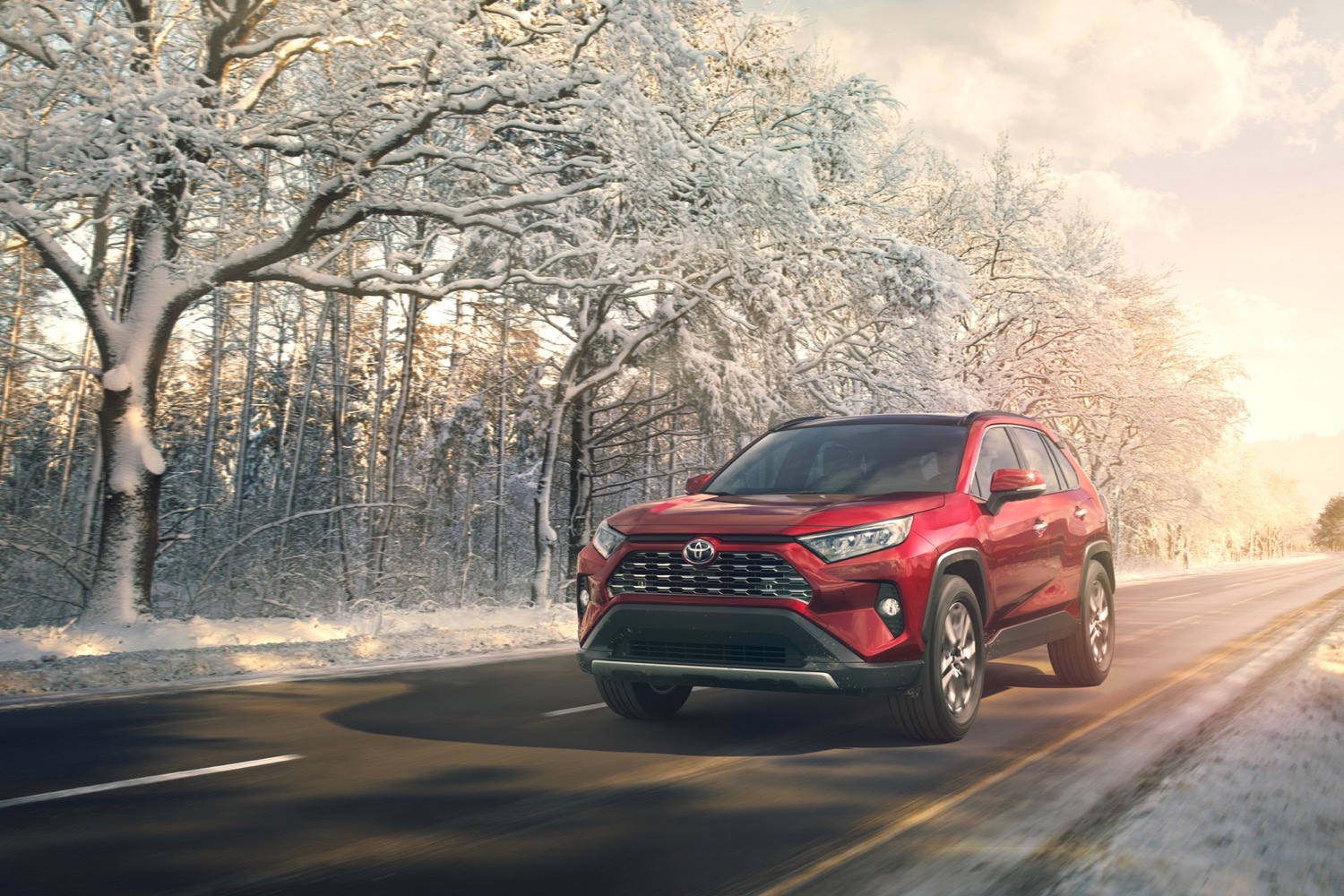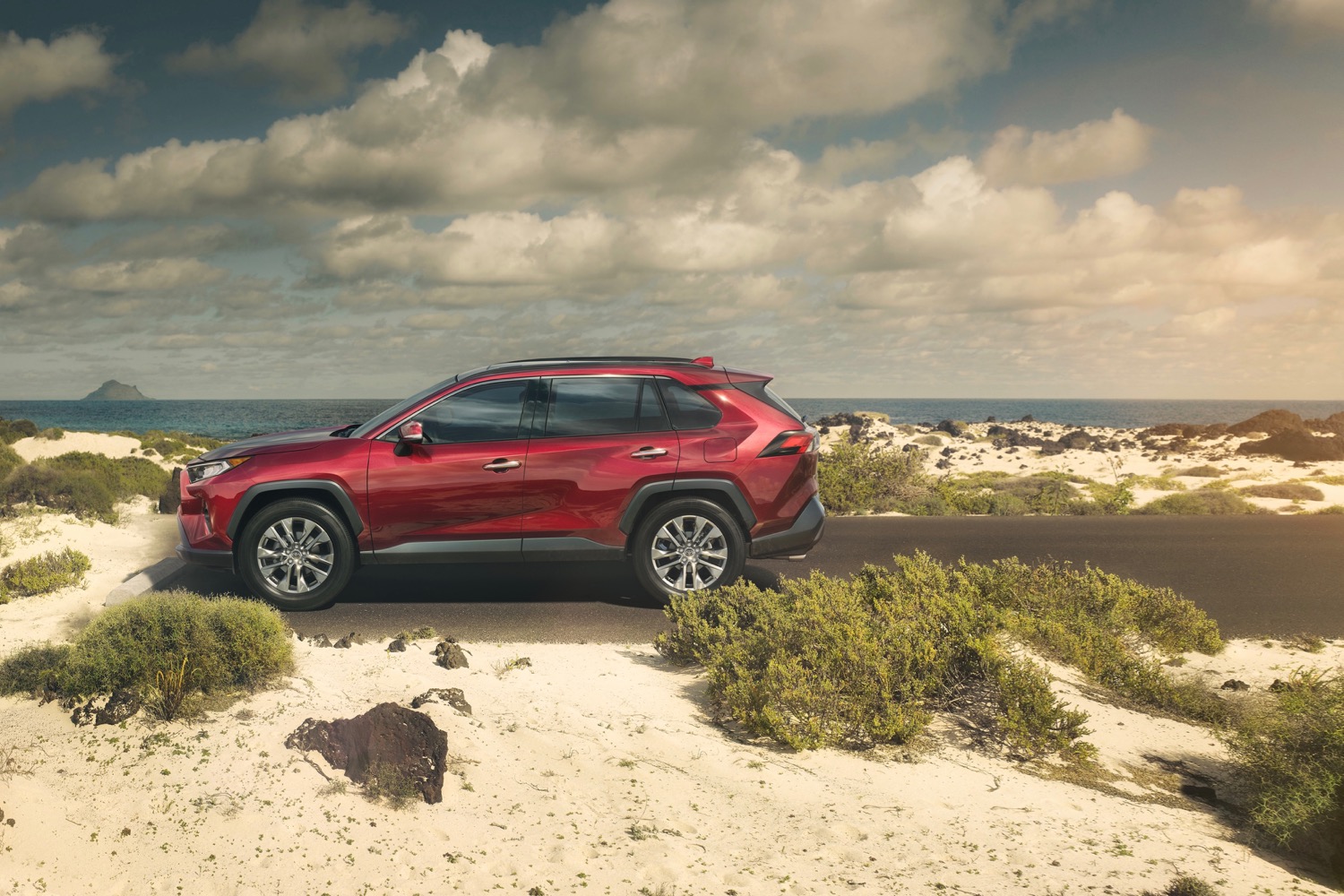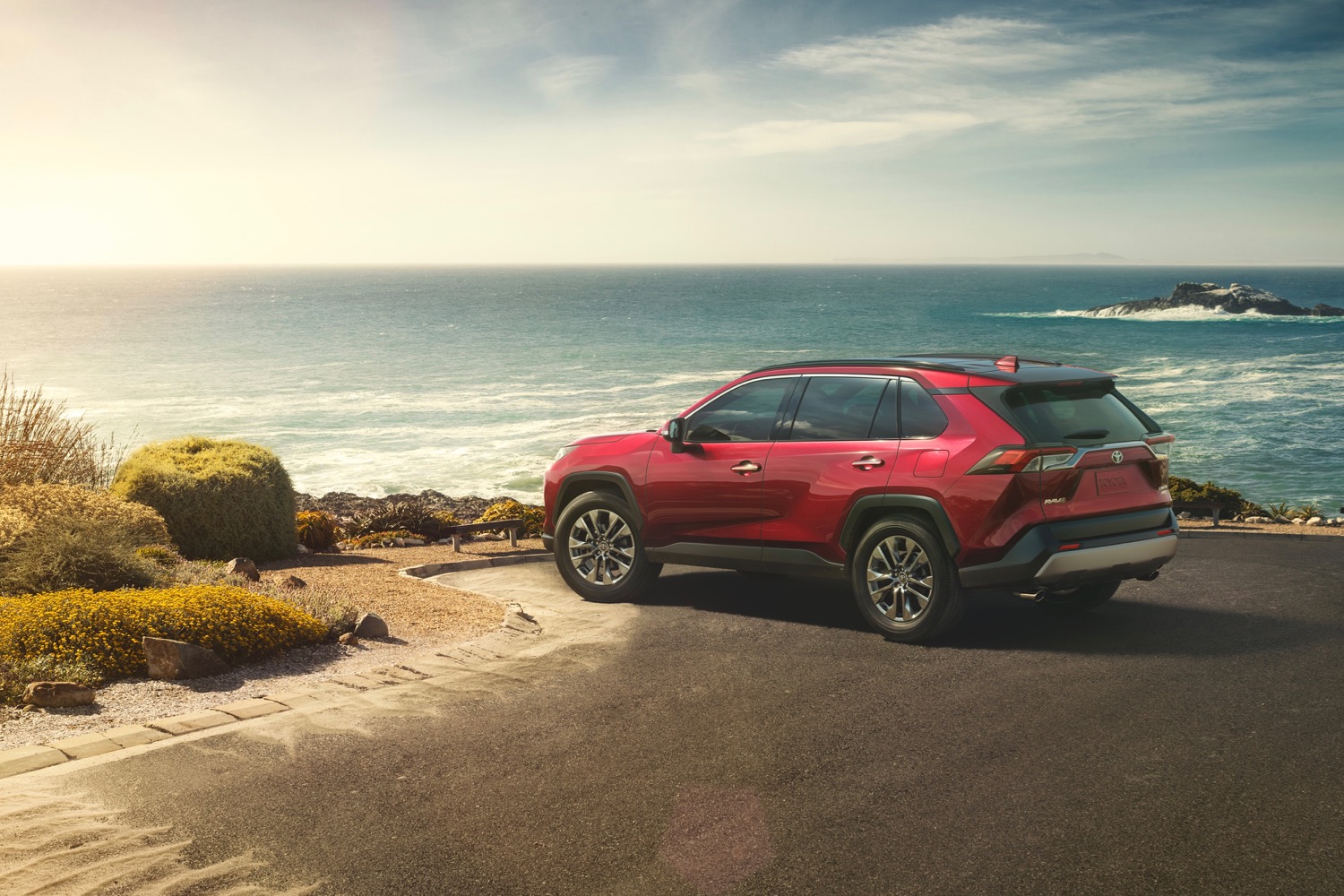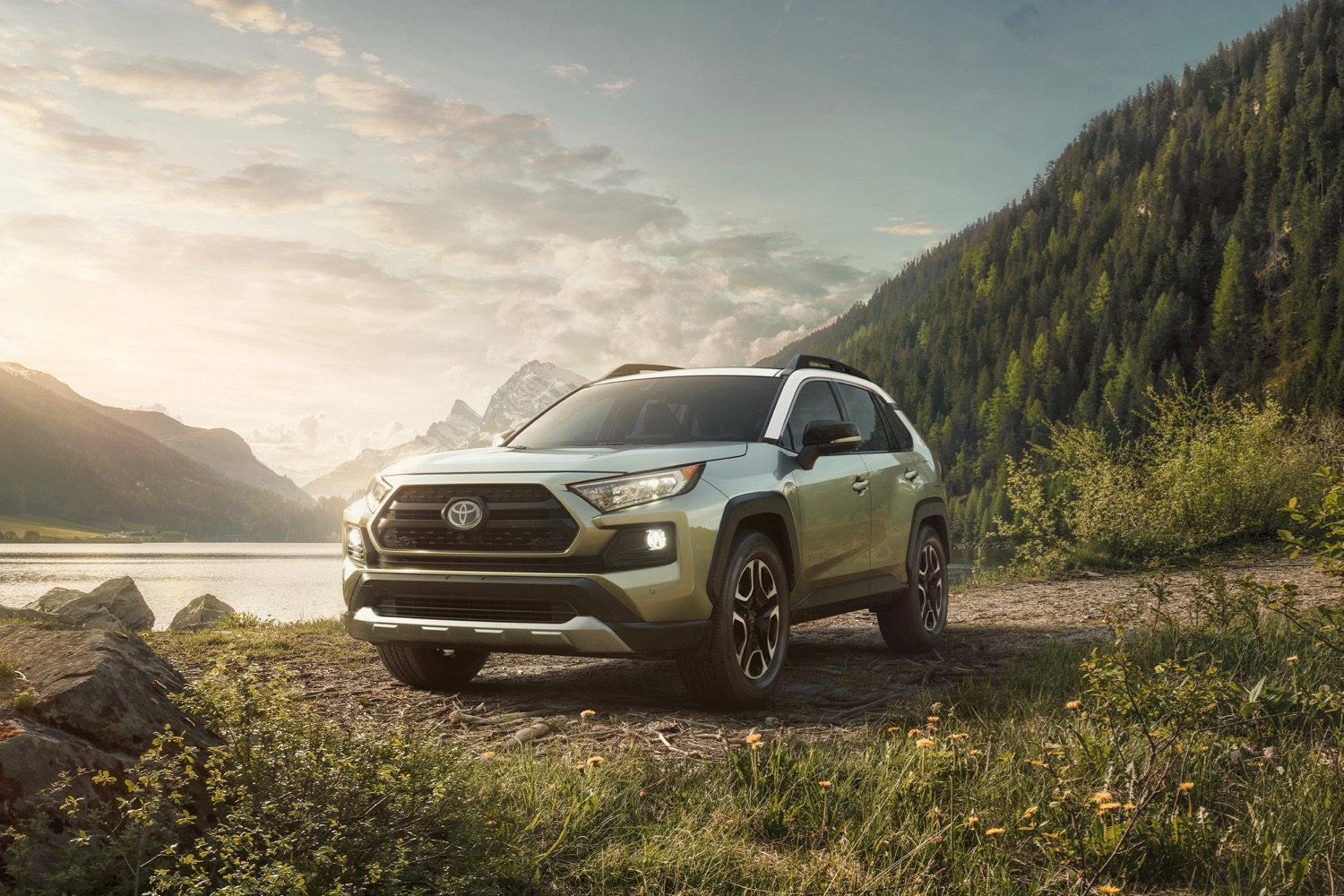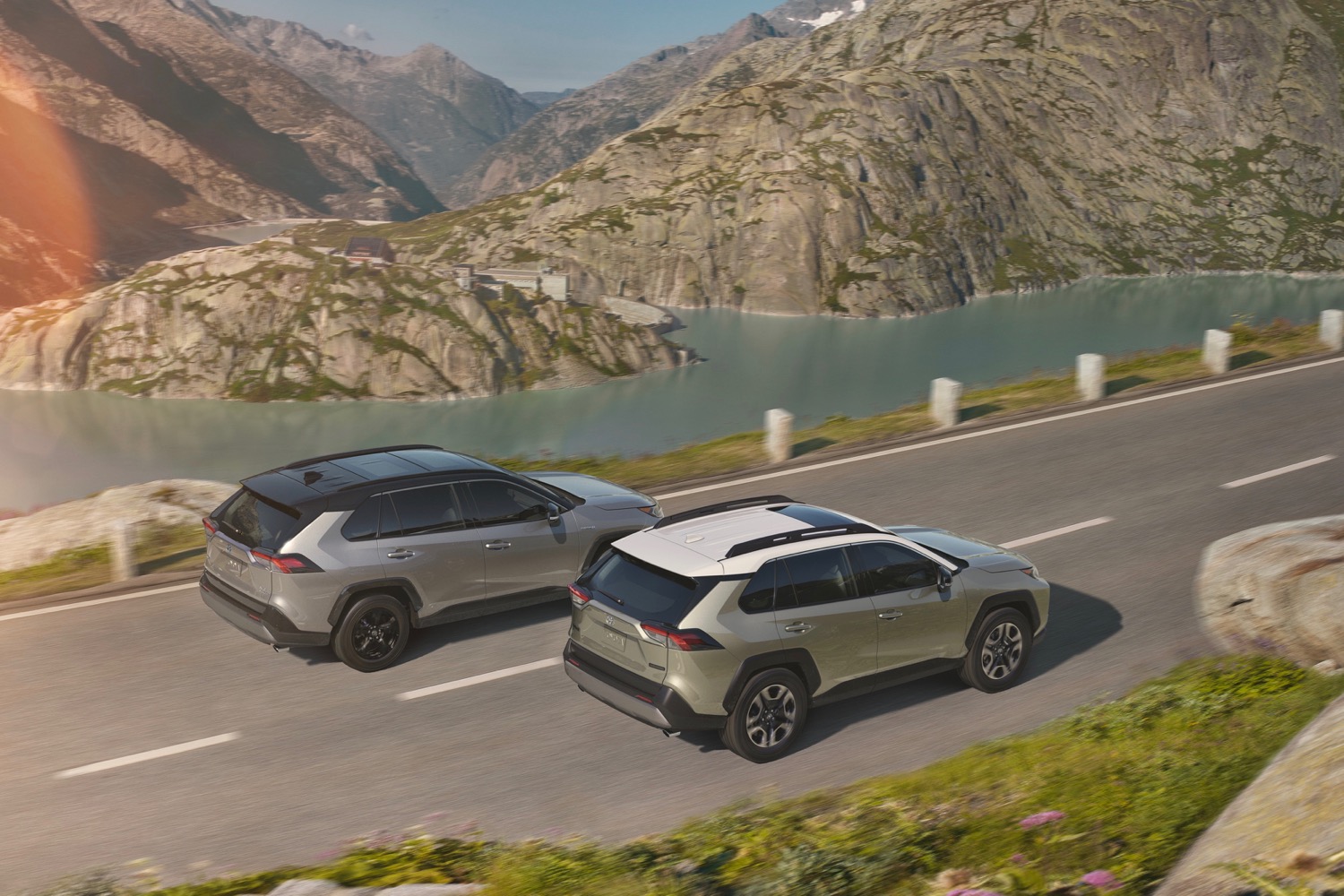The Toyota RAV4 ended 2017 as America’s fourth best-selling vehicle, ahead of the Nissan Rogue and right behind pickup trucks from Detroit’s Big Three. Toyota wants to keep the momentum going by introducing the all-new 2019 RAV4 at the upcoming New York Auto Show.
Right-sized and loaded with useful tech features, the family-friendly RAV4 has gone through four generations since the original model made its American debut in 1995. To add context, the current RAV4 went on sale in 2012, and Toyota updated it in 2015. We expect the firm won’t stray too far from the formula that has made the nameplate a success for over two decades. The king of compact crossovers will continue to offer value and peace of mind above all; don’t expect it to suddenly place a huge focus on off-road prowess, luxury, or performance.
The 2019 RAV4 takes on a more traditional SUV look than its predecessor, with angular lines, a frowning grille, and other elements seemingly cribbed from the Toyota 4Runner and the recent FT-AC concept. Under the skin, the RAV4 rides on the same Toyota New Global Architecture platform as the Camry and Prius.
The standard 2019 RAV4 engine is a 2.5-liter four-cylinder mated to an eight-speed automatic transmission. That engine is paired with Toyota’s familiar hybrid system in the returning RAV4 Hybrid model. Toyota wasn’t willing to discuss specs, but did say that the 2.5-liter engine–codenamed “Dynamic Force”–achieves 40 percent thermal efficiency (41 percent for the hybrid model), meaning it’s better at turning combustion into propulsion than the average engine.
As before, front-wheel drive is standard and all-wheel drive is optional. The system includes torque vectoring to improve handling, and can disconnect the rear axle to save fuel. While Toyota does offer a Multi-Terrain Select system that tailors various vehicle parameters to driving on snow, mud, sand, or rocks, the RAV4 will probably be more comfortable on road than off.
For years, Toyota opted not to offer its cars with Apple CarPlay and Android Auto out of concerns about security and driver distraction. It recently announced some of its cars will be compatible with CarPlay, including the 2019 Avalon unveiled in Detroit last January. The RAV4 also gets Apple CarPlay compatibility, as well as Amazon Alexa integration, but Android Auto still isn’t on the menu. The standard Entune 3.0 infotainment system includes a 7.0-inch touchscreen, while an 8.0-inch screen is optional. The RAV4 can also be equipped with up to five USB ports and Qi wireless phone charging.
Standard driver-assist tech includes autonomous emergency braking, adaptive cruise control, lane departure alert with steering assist, and automatic high beams. Two new features debuting on the RAV4 are Lane Tracing Assist (provides steering assist to keep the car centered in its lane), and Road Sign Assist (identifies road signs and pesters the driver about them).
When it lands, the next-generation RAV4 will compete in the crowded compact crossover segment against models like the Honda CR-V, its arch enemy the Mazda CX-5, the Subaru Forester, and the Hyundai Tucson, among others. Pricing will be announced closer to the launch date.
